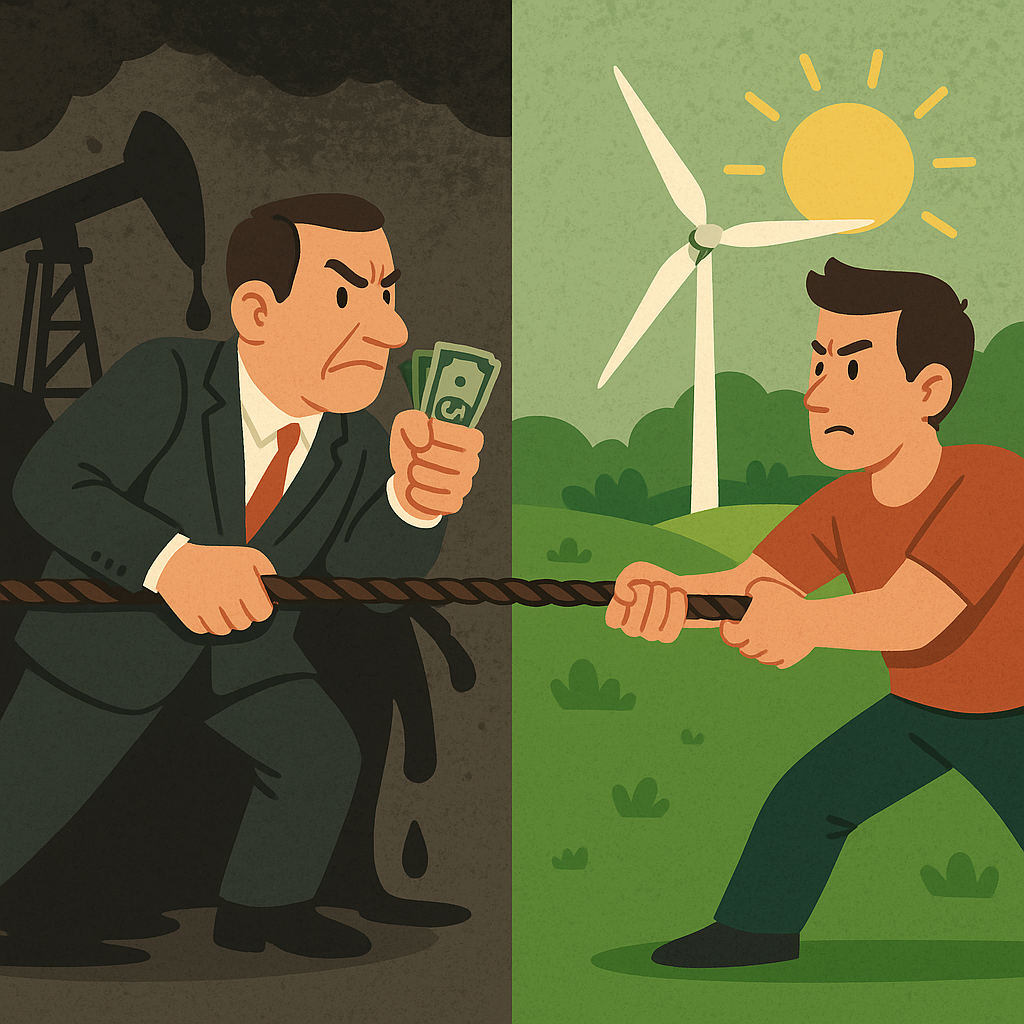The Real Energy Crisis? We're Losing 60% of Fossil Energy Before It Reaches Us
Imagine buying a full basket of groceries, then dropping more than half in the parking lot before you even get home. That’s how the fossil energy system works today.
Fossil fuels lose up to 60% of their energy before reaching homes, vehicles, or factories. This includes flaring at the wellhead, heat loss in combustion, outdated power plants, and inefficient long-distance transmission. According to Lawrence Livermore National Laboratory, only about 32% of primary energy in the U.S. is actually used.
In contrast, renewables like solar and wind avoid combustion altogether. They convert sunlight and wind directly into electricity and are increasingly deployed closer to end-users, through rooftop systems, community solar, or regional wind farms. This local use helps reduce transmission losses.
The IEA notes, decentralized deployment is a key strength of renewables, though they are also traded across borders, like solar exports from Spain to Germany.
So why are we still backing the least efficient option?
Fossil fuels still receive over $1.5 trillion in global subsidies each year through tax breaks, direct cash, and below-market leases on public lands.
And here’s the kicker: as we shared in the previous blog Double-Charged: Paying for Fossil Fuels Twice & Subsidizing Pollution and Waste Along the Way, many of us are unknowingly helping fund this system, once through our taxes, and again through the fuel, electricity, and plastic we buy.
It isn’t a secret.
“We are subsidizing the destruction of our planet on a massive scale. Every dollar spent on fossil fuels is a dollar taken from people and planet.”
A Smarter Energy Checklist
☐ Rethink the question: Don’t just ask “What’s cheapest?” Ask “What’s least wasteful?”
☐ Choose a better power plan: Many providers offer 100% renewable energy, make the switch if you can.
☐ Move your money: Use Mindful Money to check whether your savings, pension, or KiwiSaver fund supports fossil fuels and shift to fossil-free alternatives.
☐ Support the right businesses: Prioritize brands and suppliers that focus on reducing energy waste, not just offsetting emissions.
☐ Vote for systems change: Elect leaders who are committed to modernizing the grid, investing in storage, and ending inefficient subsidies.
☐ Watch for greenwashing: Use HowLegit to verify sustainability claims made by companies (on websites, packaging, or ESG materials).
☐ Lead from within: If you work in a business or operations role, apply the Business Sustainability First Principles to uncover energy waste and operational slowdowns, and set the pace for smarter, more efficient change.
☐ Speak up: Share what you learn. Energy policy only changes when enough people stop accepting inefficiency as normal.
The energy transition isn’t just about switching fuels. It’s about stopping the waste baked into our current system. We’re not short on solutions, just stuck in outdated infrastructure and incentive loops.
And that’s something we can change, if we stop fueling the past and start demanding smarter design.
If you’re interested in clearer strategies, connect with Mr. G - Galeno Chua and check out Business Sustainability Accelerator, our training ecosystem designed to equip sustainability professionals with the tools, clarity, and credibility to lead confidently in real-world business strategy.
Watch our explainer clip: here
